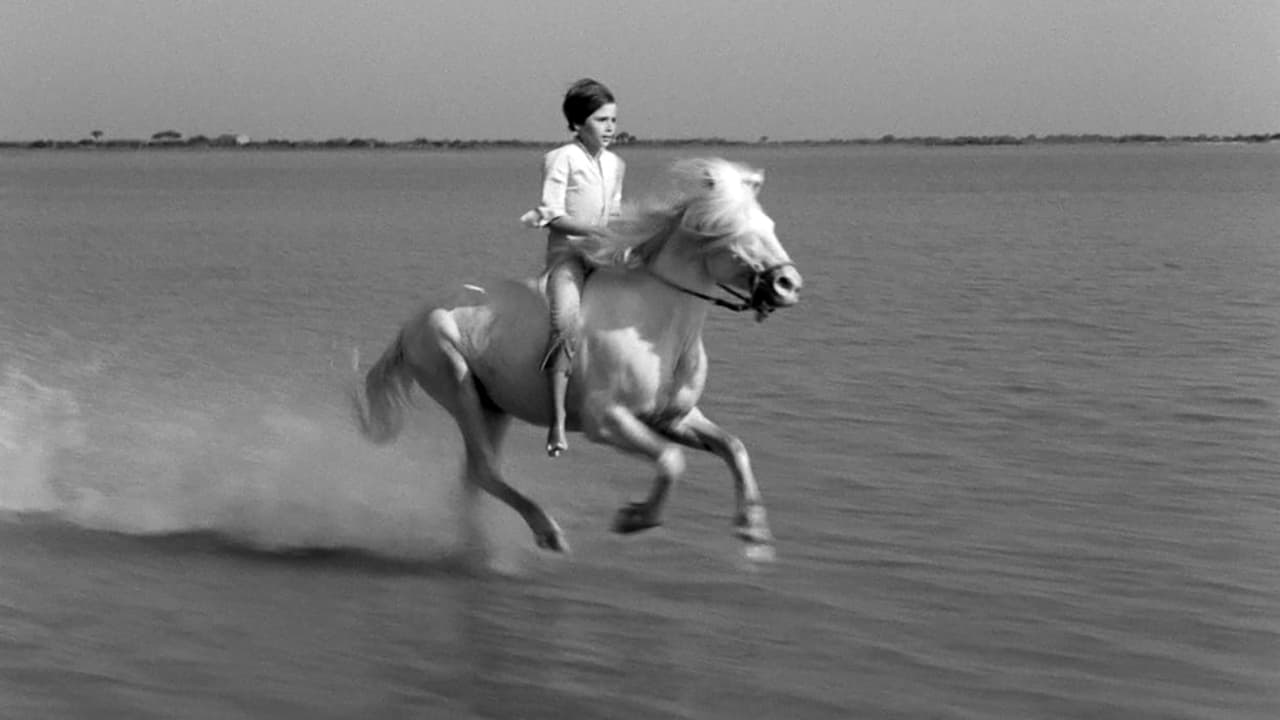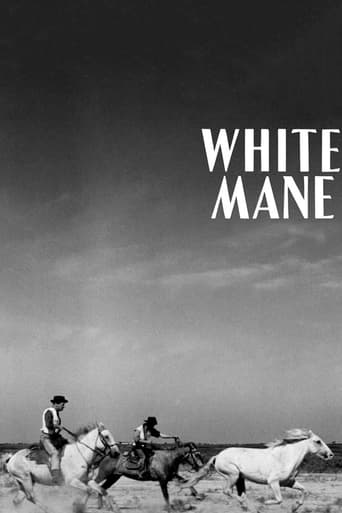

Very well executed
... View MoreIt's fun, it's light, [but] it has a hard time when its tries to get heavy.
... View Morean ambitious but ultimately ineffective debut endeavor.
... View MoreOne of the worst ways to make a cult movie is to set out to make a cult movie.
... View More"White Mane" was directed by the French filmmaker Albert Lamorisse, who also made the better-known "The Red Balloon" from three years later. The two films have several things in common, apart from the fact that both feature the name of a colour in their title. Both are very short ("White Mane", the longer of the two, only runs to forty-seven minutes) and have little in the way of dialogue. Both are centred upon the adventures of a young boy who finds an unusual playmate (a horse here, a seemingly- sentient balloon in the later film). Both are told in the form of a fable rather than of a realistic story, and have an enigmatic ending which can be interpreted symbolically.There are, however, also a number of differences. "The Red Balloon" was set in Belleville, a working-class district of Paris. It was filmed in colour, but the colours, apart from the red of the balloon itself, are dull and muted, in keeping with the gritty urban setting. "White Mane", by contrast, was shot in black-and-white on location in a remote rural area, the marshes of the Camargue in the South of France.The Camargue is noted for its herds of free-roaming wild horses, and the film tells the story of one of them, a white stallion called White Mane (Crin Blanc in French). A group of ranchers persistently try to capture him but White Mane, who distrusts men, always manages to escape. The only human who can tame him is a boy named Folco who lives in the marshes with his fisherman grandfather and younger brother.The story is a simple one and the film has always been popular with children. As with "The Red Balloon", however, there is plenty of symbolism for adult audiences who like that sort of thing. The wild horse becomes a symbol of freedom; he resists the ranchers, who try to capture him by force, but he will submit to Folco who captures him through love. There may also be a specifically religious meaning behind the films, which starts with the colour-references in the titles; in Christianity red is the colour of martyrdom and white that of purity. Religious symbolism can be attributed to the endings of both films; here White Mane takes Folco through the sea (the waters of baptism?) to an island where "horses and men can always be friends", a possible reference to an afterlife.Such attempts to attribute symbolic meanings to films, especially children's films, will always be controversial and there will always be ample grounds for disagreement about such matters. One area, however, which I suspect will give rise to little controversy is the film's visual impact. Lamorisse's clean, vibrant black-and-white photography is absolutely masterly, revealing the wild, lonely beauty of the marshes. It is the sort of film which one could, if one were in the mood, watch simply as a succession of striking images, without giving much thought either to the story or to its underlying meaning. In this respect I felt that "White Mane" excelled even the high standard of "The Red Balloon". 9/10
... View MoreI have this as the adjoining feature to my DVD "The Red Balloon"' both written by Lamorisse. This is obviously in colour, while White Mane is in quite high-key black and white and this could have been to contrast the very different subjects and their treatment. Often colour film stock is shot at the time as it's relatively easy to get a monochrome version from it but impossible the other way around.It does work very well, though. And, to my mind and especially immediately after watching Red Balloon (for the 4th time) it had extra resonance.The Balloon takes on a life of its own and gets captured, cornered, like an animal (I think of it as the boy's pet dog, obediently following him, as in Disney films of old) and on its expiration, a "pack" of fellow rubbery spherical objects gather together and rescue the boy from the bullies.Similarly, the white stallion denotes freedom. It's wild, when very few horses, anywhere in the world, are. And, yet this is modern(ish) southern France, the Carmague. Schoolboy geography told me it to be a place of special beauty, for its flamingos and, yes, the horses.As with any western, baddie guys want to round up and imprison this symbol of beauty and freedom. The un-tamable. Only this lad can - and does. After injury in a fight with an incoming stallion, our horse reaches to the lad for help with its injuries.The final scenes are open to interpretation but to my mind are exactly as the boy in Red Balloon. But the outcome is exactly the opposite. Both the horse and the boy knew of their fate but free, together, they can never be captured. Nor their souls.
... View MoreSo, Lamorisse's (I'm just reading he created the game "Risk", now that's a piece of information!) WHITE MANE is older, and less famous (and less awarded. It's pretty unique the beginning of THE RED BALLOON with the listing of all of its awards [8 in total]. Here the listing is composed of only 2 awards), than his THE RED BALLOON (three years older, 1953 and 1956) but in the Janus Films DVD they don't come in a chronological order, as THE RED BALLOON is pretty much the main attraction. I, sort of, respected the order of the DVD and watched first THE RED BALLOON, so I was like, after watching WHITE MANE, "this is pretty much like a remake of THE RED BALLOON, only that here we don't have balloons but wild horses" yes, both are quite similar in terms of the plot. I think this could have been so much profound and touching with its same basic plot. One of the complaints of some other IMDb users about THE RED BALLOON is its thin plot for a whole half hour, but I didn't find in that a problem as the film is charming and funny with the simple adventures of a kid and his balloon, and for me it never felt overlong. However, I did feel that problem in WHITE MANE. It's even a bit boring at times, and I really think something is missing, I mean the thing is there with the kid (a fisherman from the south of France) who becomes the friend of a wild horse (this horse, White Mane, is a real definition of a wild horse. And is worth to mention that we have a sequence, like 3 minutes, of a horse fight... pretty strange) and the bullies (that certainly just won't stop in their way of, in this case, prove that no horse can be a "rebel" with humans) near them but like I said, something is missing, maybe something in the vein of its great, touching and meaningful ending.
... View MoreIn the mid-fifties, Albert Lamorisse produced two beautiful, but strangely distant films, "The RedBalloon" and "White Mane". "Red Balloon" has been available and remained somewhat popular, while "White Mane" all but disappeared. Its re-emergence is welcome, as it offers intensely compelling black and white imagery, cinematography that is a cross between Ansel Adams and Atget, in its rich tones, dramatic light, and epic feel.Red Balloon, offers an interesting contrast. Paris is all muted earth tones and grays, with the balloons offering the only vivid colors. It is also interesting to remember that World War II was less than a decade earlier.Little Pascal, the director's son, is seen in both films, always appealing never "cute", but somehow distant. We don't really know him except as "the little boy".The two films are wonderful artifacts from a time when film was more art than marketing.
... View More